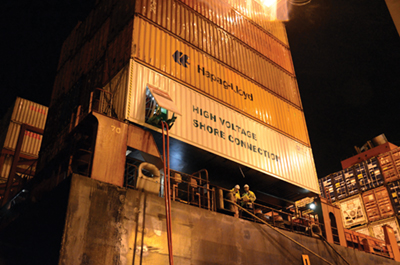
Port of Oakland clean energy efforts are getting a $5.2 million boost from the federal government.
The port said in late December that it has been chosen to receive grant funds from the Maritime Administration (MARAD) for electrical-power upgrades. The grant supports the port’s vision of eliminating emissions from maritime operations.
“We’ve got an ambitious clean air goal,” port Executive Director Danny Wan said. “This grant from the Maritime Administration is an important moment in helping us take another step toward our goal of zero emissions from maritime operations.”
The port said the funds could be used for three purposes:
- Construction of a fuel-cell site and a solar-panel installation with battery storage,
- Replacement of an electrical substation, and
- Connecting the substation to a biomass generator.

Oakland has said that its long-term objective is to eliminate reliance on fossil fuels in cargo-handling operations, and that the electrical upgrades demonstrate that it is taking another important step in its commitment to zero emissions at the seaport.
The Port of Oakland applied for the funding from the U.S. Department of Transportation last summer. The grant was made through MARAD’s Port Infrastructure Development Program (PIDP).
The port said additional funding is necessary to advance its clean energy aspirations and indicated that it would also request funds from the state.
Oakland has been one of the leaders among West Coast ports in sustainable cargo handling. Among its efforts have been the establishment of a shore power system that plugs ships into the electrical grid at berth. More than 15 battery-powered big rigs are in operation at the port transporting cargo containers. Thirteen massive cargo-handling cranes have been converted to hybrid engines. Oakland also operates night gates to limit truck congestion and engine idling at marine terminals.
In recent years, the port and its partners have cut diesel emissions at the seaport by 86% through Oakland’s Maritime Air Quality Improvement Plan.
